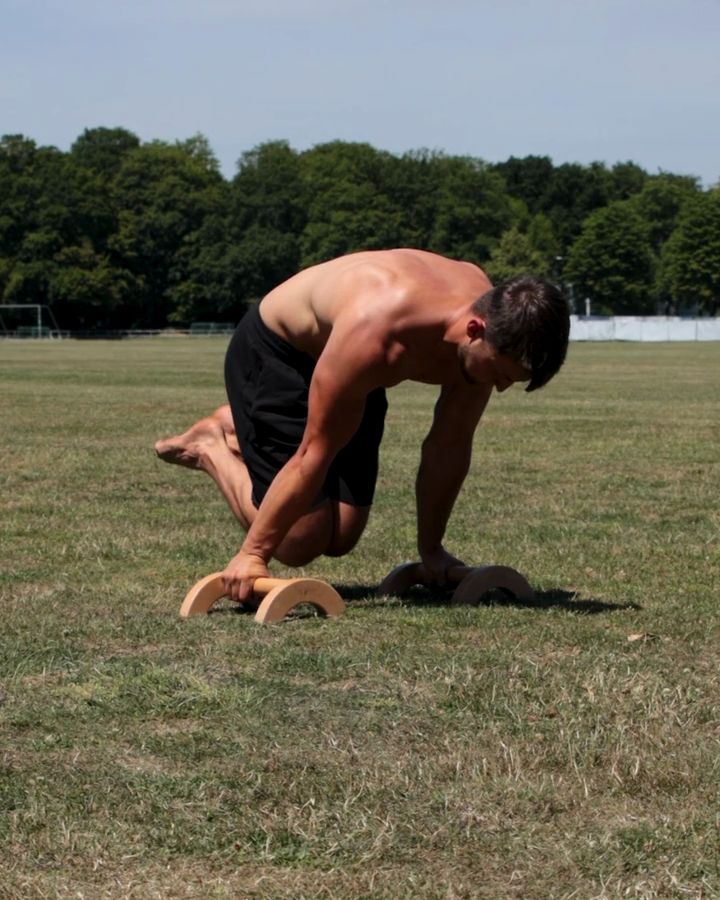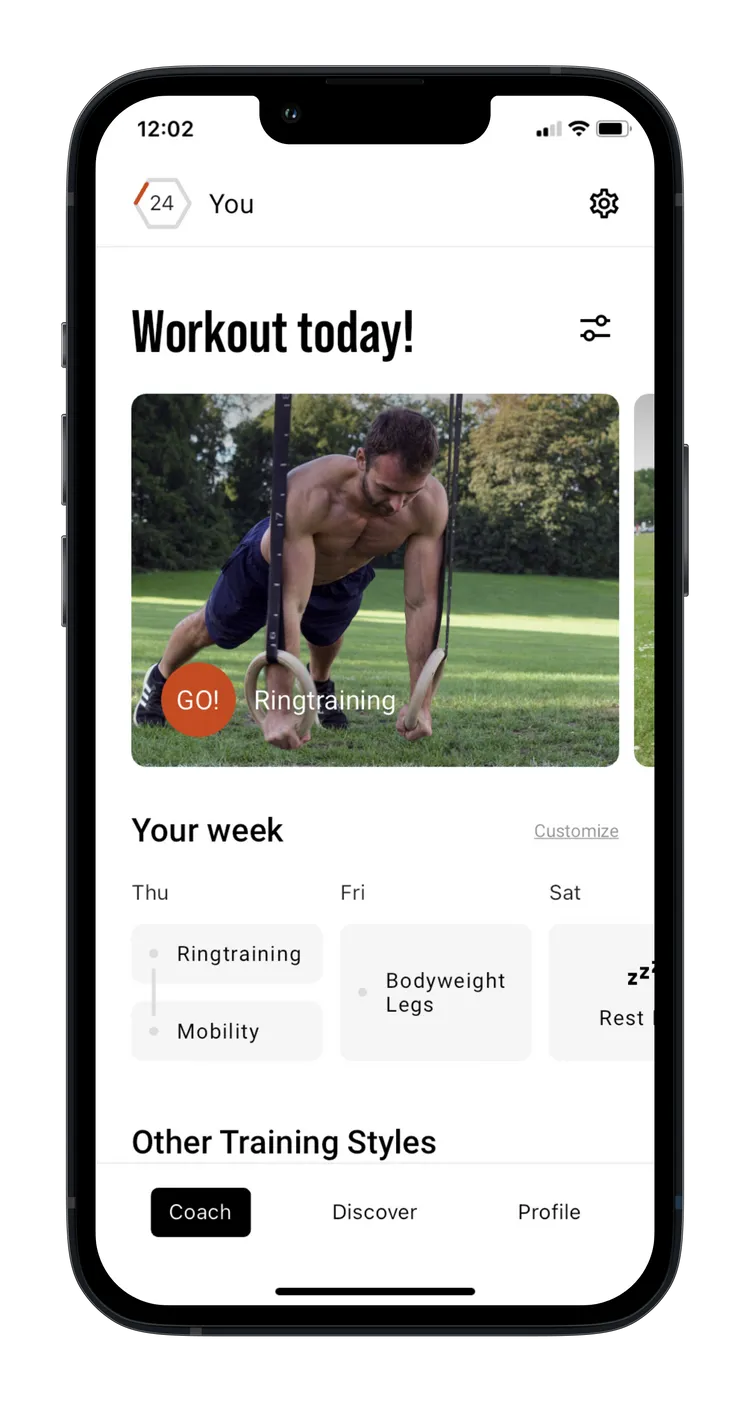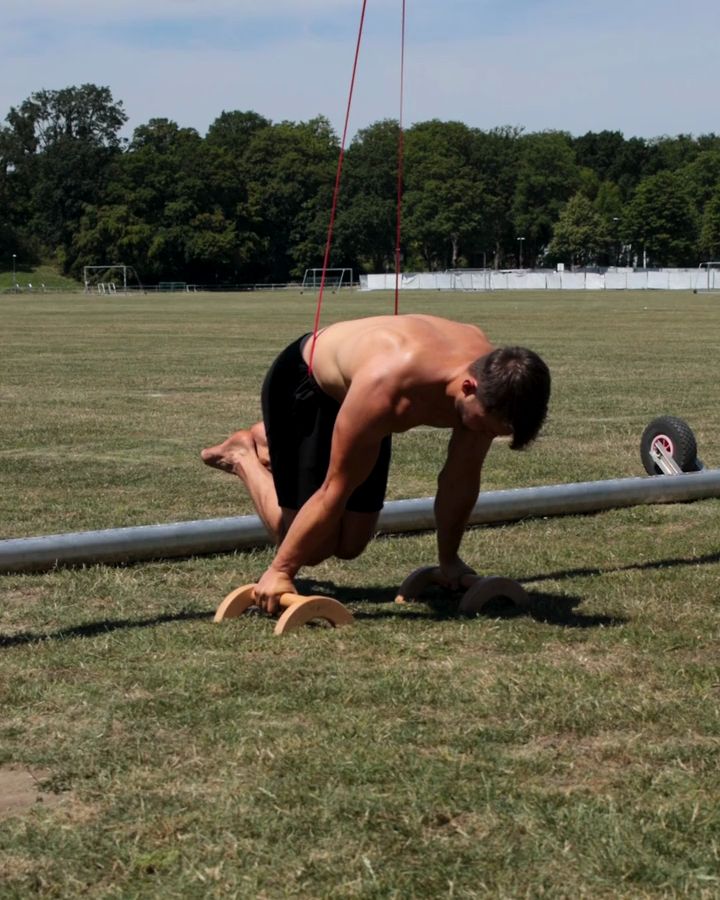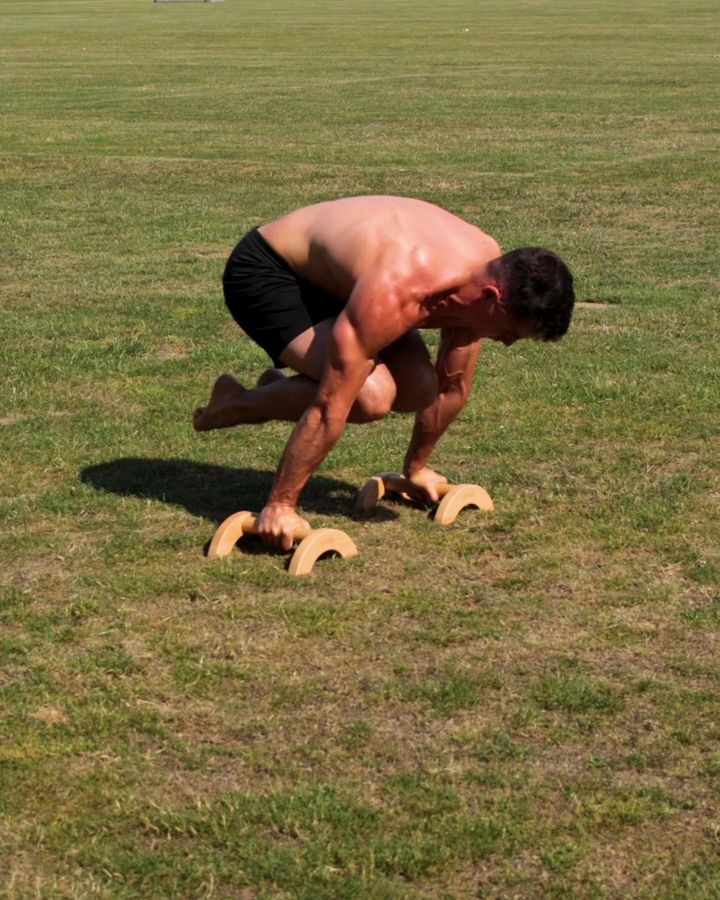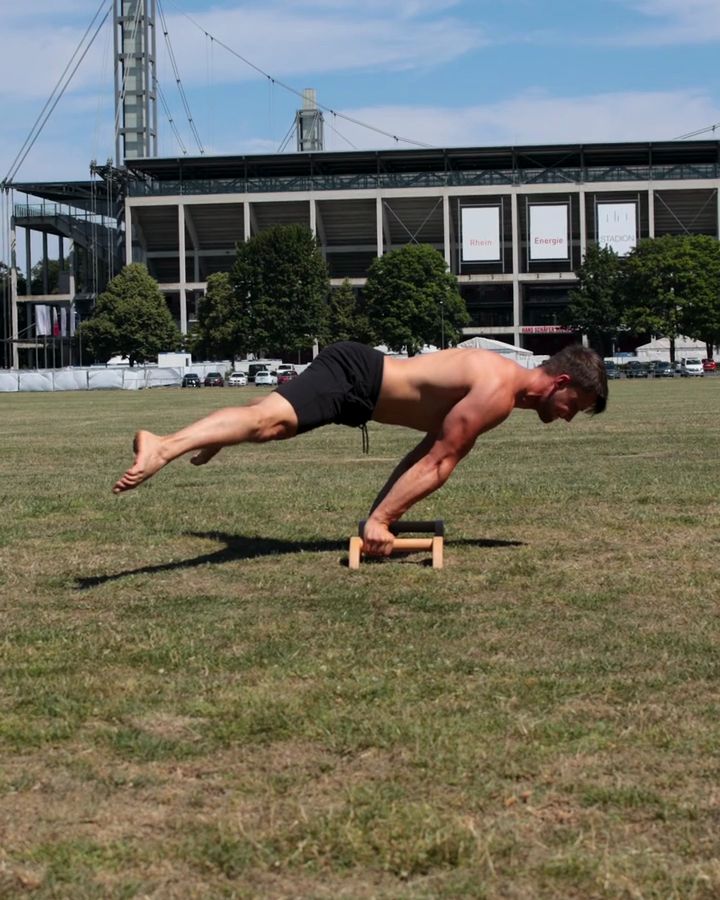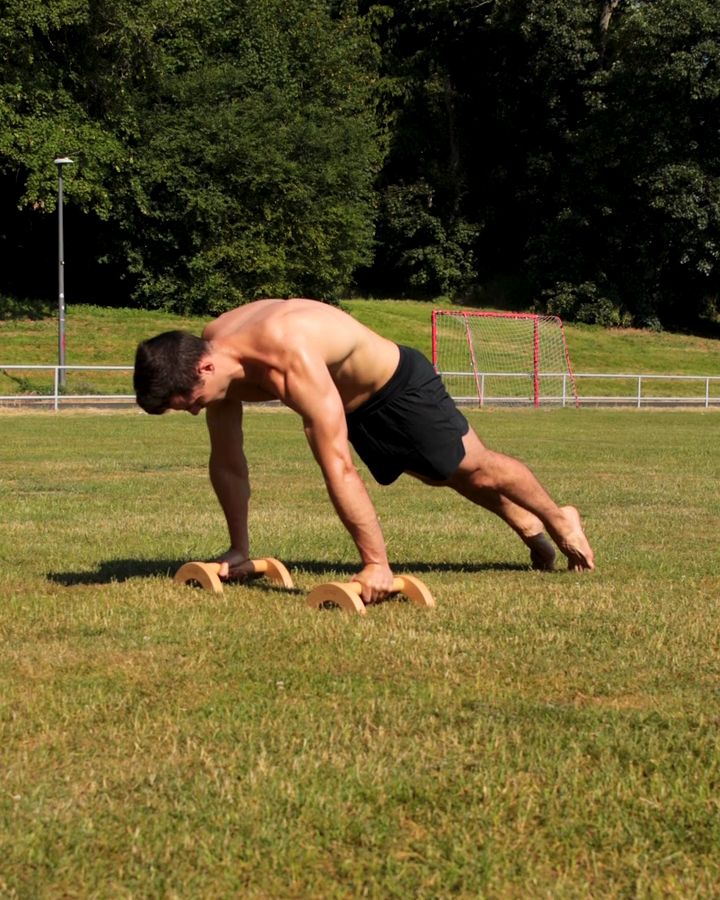Advanced Tuck Planche with parallettes
The Advanced Tuck Planche is a challenging variation of the Planche. Compared to the basic Tuck Planche, where the knees are close to the chest, the legs in the Advanced Tuck are only slightly bent, which requires more strength and body control. This exercise serves as a transition to the Full Planche and is an important progression for calisthenics athletes looking to improve their Planche technique.
Necessary equipment
Advanced Tuck Planche with parallettes - the correct execution
- Start in quadruped position on the parallettes
- Extend your arms to the maximum and consciously tense your triceps
- Press the Parallettes firmly into the floor and position your shoulders in a protracted depression (front down)
- Activate your chest and shoulder muscles
- Lean forward and shift your body weight to your hands
- Lean forward until you almost feel like you are going to tip over
- Lift the feet off the floor and keep the hips open a little more than 90 degrees
- Keep maximum tension in the core in the position
- Make sure your arms remain extended throughout and your shoulders are in a deep and forward position (protraction/depression)
The exercise Advanced Tuck Planche is intended to be used as a technique exercise.
Which muscles are trained by Advanced Tuck Planche?












Primary trained muscles for Advanced Tuck Planche
Front Delts - The front part of the deltoid muscle, also known as the anterior shoulder, is located at the front of the shoulder. It is primarily involved in the forward movement of the arm, such as lifting the arm forward. It also assists in the internal rotation of the arm. This muscle is engaged in activities that involve lifting objects in front of the body or pushing forward.
Serratus Anterior - The serratus anterior muscle, also known as the anterior serratus muscle, is a muscle that runs along the sides of the ribs and attaches to the inside of the shoulder blade. It helps move the shoulder blade forward and outward and fix it against the chest wall. This is particularly important for movements such as bringing the arm forward or lifting the arm overhead. The serratus anterior muscle also plays a crucial role in stabilizing the shoulder during pushing or striking actions.
Biceps - The biceps brachii muscle is located on the front of your upper arm. It helps you bend your arm at the elbow, rotate your palm upwards, and lift your arm forward.
Secondary trained muscles for Advanced Tuck Planche
Triceps - The triceps brachii muscle is located at the back of your upper arm. It extends your arm at the elbow and also helps move the arm backward.
Lower Back - The erector spinae muscle runs along your spine and helps you extend your back and stand upright.
Alternative variants of Advanced Tuck Planche with parallettes:
Banded Advanced Tuck Planche
The Advanced Tuck Planche with a band is an easier variation of the Advanced Tuck Planche. Choose a stronger or weaker resistance band to make the exercise easier or harder.
Necessary equipment
Banded Advanced Tuck Planche - the correct execution
- Place a light resistance band (red) over the parallettes, for example on a pull-up bar
- Position the resistance band at your hips
- Start in quadruped position on the parallettes
- Extend your arms to the maximum and consciously tense your triceps
- Press the Parallettes firmly into the floor and position your shoulders in a protracted depression (front down)
- Activate your chest and shoulder muscles
- Lean forward and shift your body weight to your hands
- Lean forward until you almost feel like you are going to tip over
- Lift the feet off the floor and keep the hips open a little more than 90 degrees
- Keep maximum tension in the core in the position
- Make sure your arms remain extended throughout and your shoulders are in a deep and forward position (protraction/depression)
Similar exercises to Advanced Tuck Planche
Tuck Planche on parallettes
The tuck planche is a fundamental preparatory exercise for the planche. In this position, the body is held horizontally above the ground with the legs tucked toward the chest and the arms straight. Parallettes make the grip easier, reduce strain on the wrists, and provide extra stability as well as more clearance for the legs and feet due to the elevated starting position. The frog stand is often mistaken for the planche, but it involves bent arms, not straight arms, and therefore doesn’t belong to the family of straight arm skills.
Straddle Planche with parallettes
The Straddle Planche is an advanced calisthenics exercise where the body is held horizontally and parallel to the ground, with the legs spread apart. This position shortens the lever arm, making the exercise easier compared to the Full Planche.
It intensely trains the shoulders, core, and arms, requiring strong abdominal muscles, stable shoulder strength, and resilient wrists. The Straddle Planche can be performed on parallettes or directly on the ground, with the ground variation demanding greater wrist endurance. The regular Planche, where the legs are kept together, poses an even greater challenge, requiring more balance and strength.
Planche Lean
The Planche Lean is one of the best exercises to prepare for the Planche, one of the most impressive calisthenics moves. Using parallettes helps reduce strain on the wrists and provides a more stable grip.
This could also be interesting
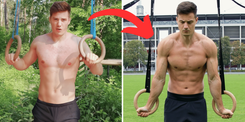
Calisthenics Body Transformation – How to Build a Strong, Lean, and Athletic Physique
Transform your body with Calisthenics! Build muscle, burn fat & achieve a shredded physique with bodyweight training. See real before & after results!

The Best Fitness Apps in 2025: Our Top 10 Recommendations
Don’t miss the best fitness apps of 2025: surprising favorites, free options, and perfect tools for your workouts. Find the ideal app today!
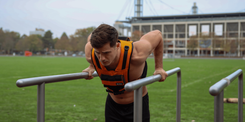
Complete Calisthenics Skills List – 40+ Exercises from Beginner to Pro
Which calisthenics skills should you learn first? And which ones will really help you progress? In this article, you’ll find a complete list of over 40 exercises – from the very basics to the toughest moves for professionals. Each exercise comes with instructions, so you can immediately integrate them into your training.
